1. Fosdinovo
We know of the existence of the town of Fosdinovo since the 11th century, but the first attestation of the present toponym dates back to the 14th century (originally, the village was known as “Faucenova”). Fosdinovo was for many centuries a fief of the Malaspina family, dukes of Massa and Carrara, and returned to the ancient state after the Restoration, and followed its fortunes (even in 1829, when it became part of the duchy of Modena and Reggio). Its symbol is the 14th-century Malaspina Castle, built in 1340 by Spinetta Malaspina the great: it is one of the most famous castles in Lunigiana, and is still owned by the Malaspina family. Other important monuments include the ancient church of San Remigio (which is currently in its 16th-century forms), and preserves important sculptures by Giovanni Baratta, as well as the Oratory of the Whites, the Oratory of the Reds, the Malaspina Theater, and, outside the village, on the plain, the Villa Malaspina of Caniparola. Fosdinovo is also home to the Audiovisual Museum of the Resistance, one of the most important in Tuscany on the subject, also by virtue of the events that the Archives of the Resistance, which run the museum, are wont to organize.
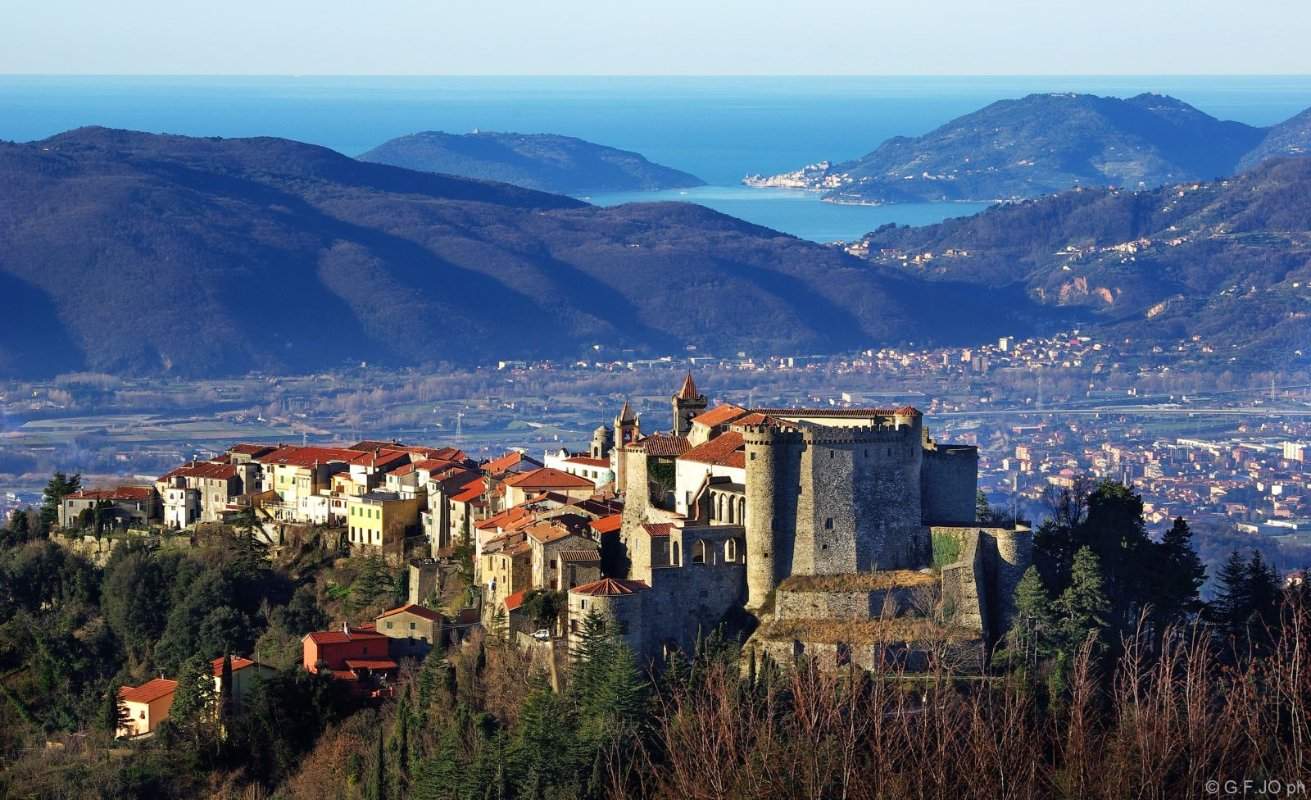 |
| View of Fosdinovo |
2. Seravezza
This is one of the municipalities of historic Versilia (along with Forte dei Marmi, Stazzema and Pietrasanta), one of the two (the other being Stazzema) that are landlocked. The village had origins in the Middle Ages but developed especially during the Medici era, when the local marble quarries were intensively exploited. Even visiting the village well shows how its history is linked to that of the Medici: the main monument, the Villa Medicea di Seravezza, preceded by a large garden, is now an exhibition center (important exhibitions are held there), as well as the site of the local Museum of Work and Popular Traditions of Historical Versilia. The 16th-century-looking Church of Saints Lawrence and Barbara preserves works from the 17th-18th centuries. The imposing Oratory of the Santissima Annunziata, on the other hand, has a 19th-century appearance: it was in fact rebuilt in 1885 after a flood of the Versilia River had heavily damaged it.
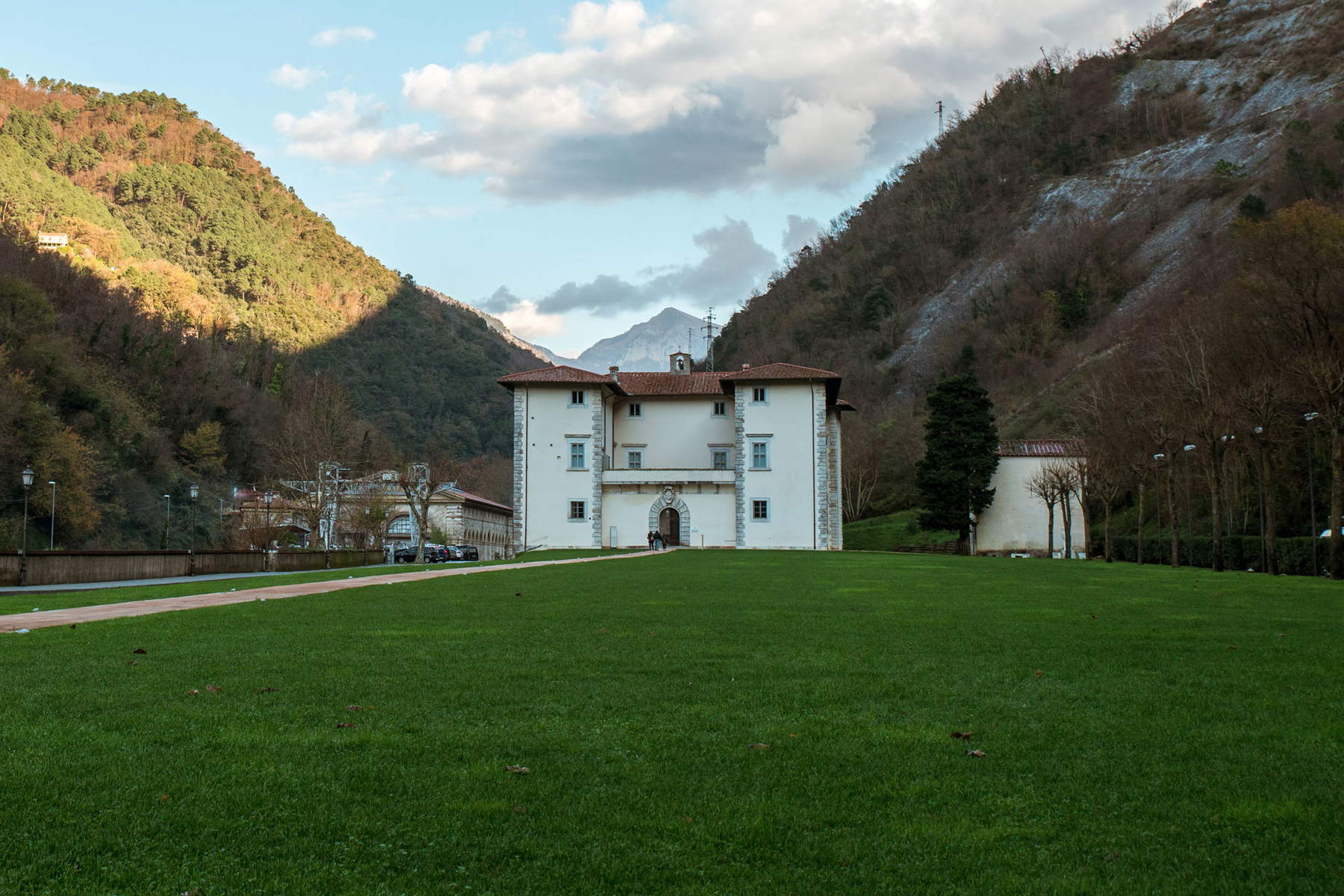 |
| The Medicean Villa of Seravezza |
3. Montelupo Fiorentino
A village bathed by the Arno River, it is universally known for the production of ceramics: an ancient possession of the Alberti family, it was conquered by the Florentines in the 13th century and since then the history of its best-known production developed, produced in large quantities as Montelupo supplied the capital. Pottery flourished especially during the Renaissance, and during the eras it changed its style several times, also following the changes in taste: still today Montelupese pottery (still produced in historical styles, as well as according to contemporary meanings) is highly appreciated. To learn about its history, visit the recently refurbished Museum of Ceramics: don’t miss the Rosso di Montelupo, the museum’s masterpiece. Also in Montelupo, worth a visit is the Archaeological Museum, which displays a significant collection of more than a thousand pieces from all over Valdarno and from various periods from prehistory to the Middle Ages: it is one of the richest archaeological museums in Tuscany. Also worth visiting in the center are the Palazzo Podestarile (now an exhibition center), the church of San Lorenzo (with remains of 13th-century frescoes) and the church of San Giovanni Evangelista, where there is a panel from Botticelli’s workshop. Outside the center is one of the Medici villas, that of the Ambrogiana.
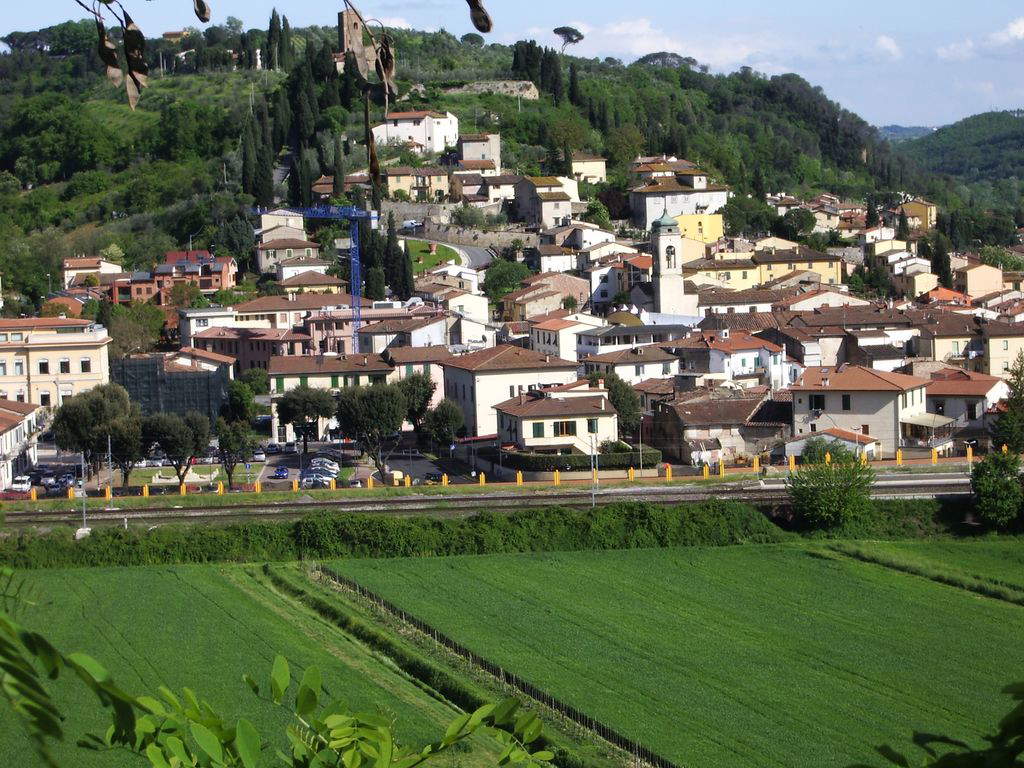 |
| View of Montelupo Fiorentino. Ph. Credit |
4. Barga
It is one of the main centers of Garfagnana and, after being a free commune, became part of the Florentine state in 1341 and was part of it until the Unification of Italy. Today it is a modern town, but the village retains many historical relics, starting with the Cathedral of San Cristoforo, which dates back to before the year 1000 and preserves medieval works (including the wooden statue of St. Christopher): its bells, moreover, inspired Giovanni Pascoli (who lived in Garfagnana for a long time) to write the poem L’ora di Barga. And, speaking of Pascoli, in the hamlet of Castelvecchio Pascoli it is possible to visit the Pascoli House Museum, which chronicles the poet’s life and work. Still in the hamlet, the center of public life in ancient times was the Arringo, the meadow between the cathedral and the Praetorian Palace, where gatherings were held. Churches (such as that of the Santissima Annunziata and San Francesco) and numerous noble palaces from ancient times allow for a further journey through history. Also worth seeing is the Magri House Museum, dedicated to Alberto Magri, an important early 20th-century painter and native of Barga.
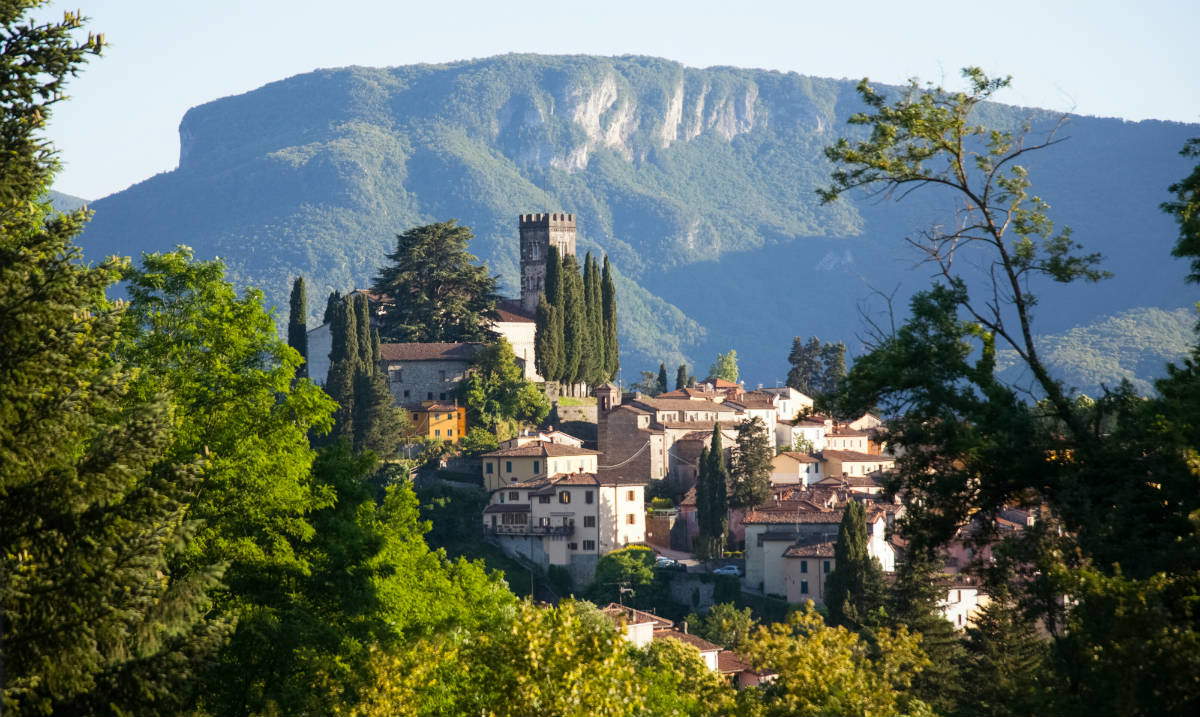 |
| View of Barga |
5. Porto Ercole
It is located on Mount Argentario, the promontory that rises in southern Tuscany, in the province of Grosseto. There were Etruscan settlements in the area, but the village began to develop in medieval times, when it was first a fief of the Aldobrandeschi family and then of the Orsini family. It became a port of the Republic of Siena in the 15th century, and experienced rapid development at the time, since it was fortified (the ancient walls are partly preserved) and, in the 16th century, after the final defeat of Siena by Florence, Porto Ercole became part of the Presidi State. And it was precisely one of the main centers of the Stato dei Presidi when, in 1610, Caravaggio landed here and died most likely from malarial fever. The village still partly retains its appearance as a military stronghold with monuments such as the 16th-century Forte Filippo, the 18th-century Forte Santa Caterina, and the Mulinaccio Tower. Inside the village are the Palazzo dei Governanti (built in the early 16th century), the church of Sant’Erasmo, the Rocca Aldobrandesca (also known as “Rocca Spagnola” since the Presidi State depended on Spain).
 |
| View of Porto Ercole |
6. Pitigliano
It is also known as “Little Jerusalem” as it has been home to a historic Jewish community for centuries. It stands on a Tufo rock, on the border with Lazio, not far from the towns of Farnese and Valentano: the Selva del Lamone divides it from these localities. An ancient feud of the Aldobrandeschi family, it was later owned by the Orsini, who ceded it in 1574 to the Medici, and since then it has been part of the Grand Duchy of Tuscany, following its fate. Its most important monument is the Cathedral of Saints Peter and Paul, which is notable for its flamboyant late Baroque facade. The center of Jewish religiosity, on the other hand, is the 16th-century Synagogue of Pitigliano, while the history of those who ruled the town is recalled by the imposing Palazzo Orsini, which was first a fortress built by the Aldobrandeschi: today we see it in the appearance given to it between the 18th and 19th centuries. The walls, built by the Aldobrandeschi, are still preserved, but the present appearance is due to the rebuilding work of Antonio da Sangallo the Younger. Nearby are several Etruscan necropolises.
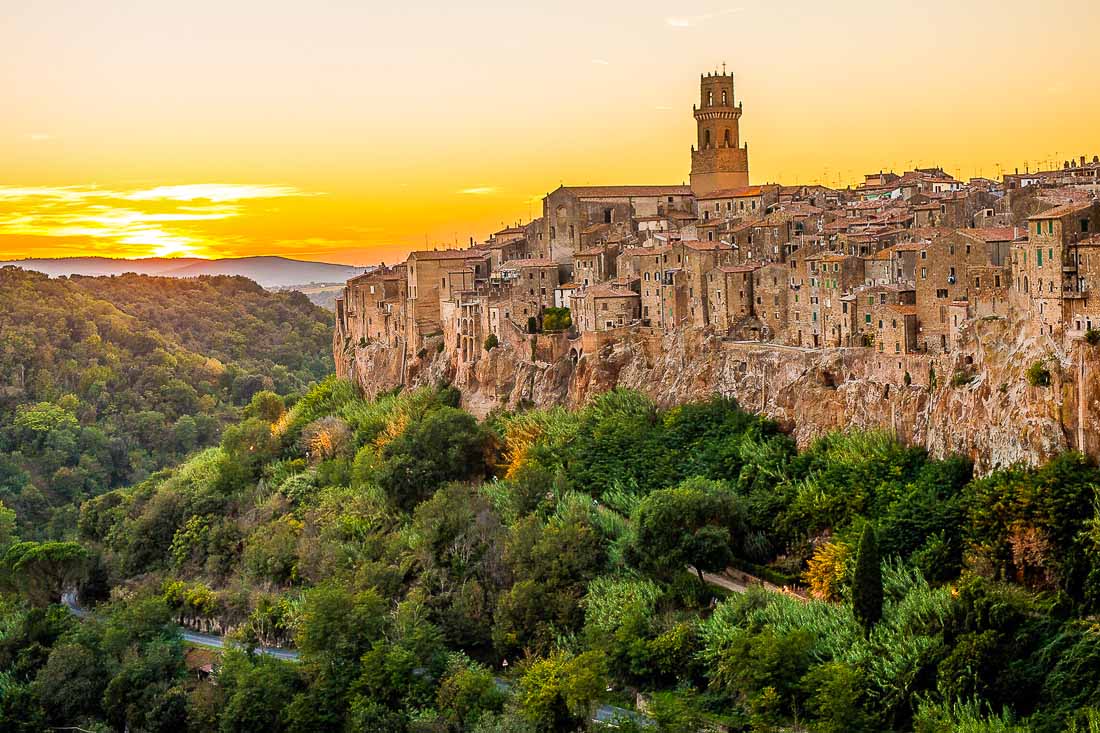 |
| View of Pitigliano |
7. San Quirico d’Orcia
When people think of Tuscan landscapes, they usually think of the rolling hills, white roads and cypress trees of the Val d’Orcia, of which San Quirico d’Orcia is one of the main centers. An ancient locality on the Via Francigena, it developed mainly in the Middle Ages, and some of its main monuments date from that period, starting with the Romanesque-looking Church of Saints Quirico and Giulitta (the interior, on the other hand, is Baroque): inside is an extraordinary wooden choir that convinced Federico Zeri to become an art historian. The baroque Palazzo Chigi Zondadari is the city’s most recognizable building and a venue for events, while a visit to the Horti Leonini, a marvelous Italian-style garden created in the 1680s by Diomede Leoni, a pupil of Michelangelo, to whom Grand Duke Francesco I de’ Medici had gifted land in the area, is not to be missed: the artist therefore decided to create his lush garden here. Near San Quirico d’Orcia is the picturesque hamlet of Bagno Vignoni, known in that its main square, dating from the sixteenth century is actually ... a thermal water pool.
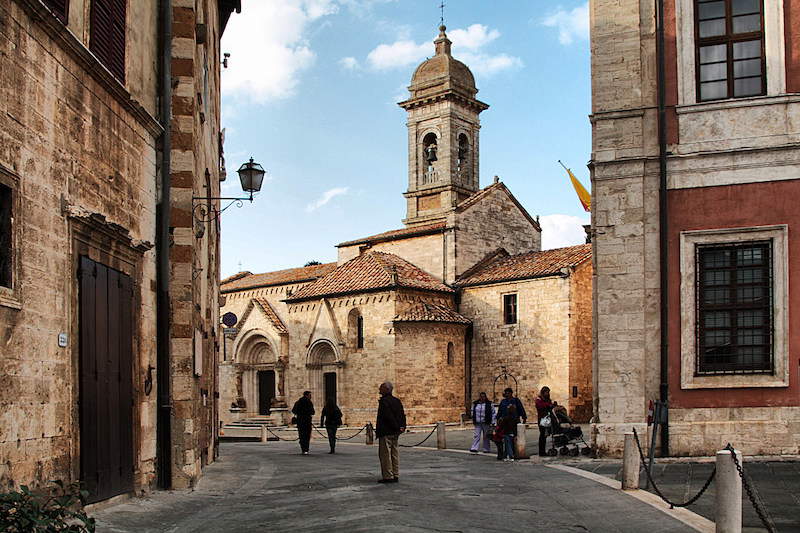 |
| Center of San Quirico d’Orcia, the collegiate church of Saints Quirico and Giulitta |
8. Bolgheri
Bolgheri, made famous by the cypress trees in Giosuè Carducci’s very famous poem Davanti San Guido (the beautiful Viale dei Cipressi starts from the oratory of San Guido and continues straight for five kilometers until it reaches the small village), is a hamlet of Castagneto Carducci of just over a hundred inhabitants, and is located in the middle of the Maremma region of Livorno. Tradition has it that the name comes from the fact that some troops of Bulgarians, who arrived in Italy along with the Lombards, established a military settlement here. The village grew up around its castle (which still exists today, although it has been remodeled over time: today it has a neo-Gothic appearance due to work carried out at the end of the 19th century) and was for centuries a fief of the Della Gherardesca family, who still own the castle: it is the first monument visitors see on arrival, and it scenically closes the Cypress Avenue. Worth seeing are the ancient church of Santi Giacomo e Cristoforo (which has been remodeled several times over the centuries, however), the oratory of San Guido itself, and the central square, where Carducci spent his childhood and where it is possible to see a statue dedicated to Lucia Galleni, the poet’s grandmother. In the village, moreover, you can still see the house where Carducci lived for some time.
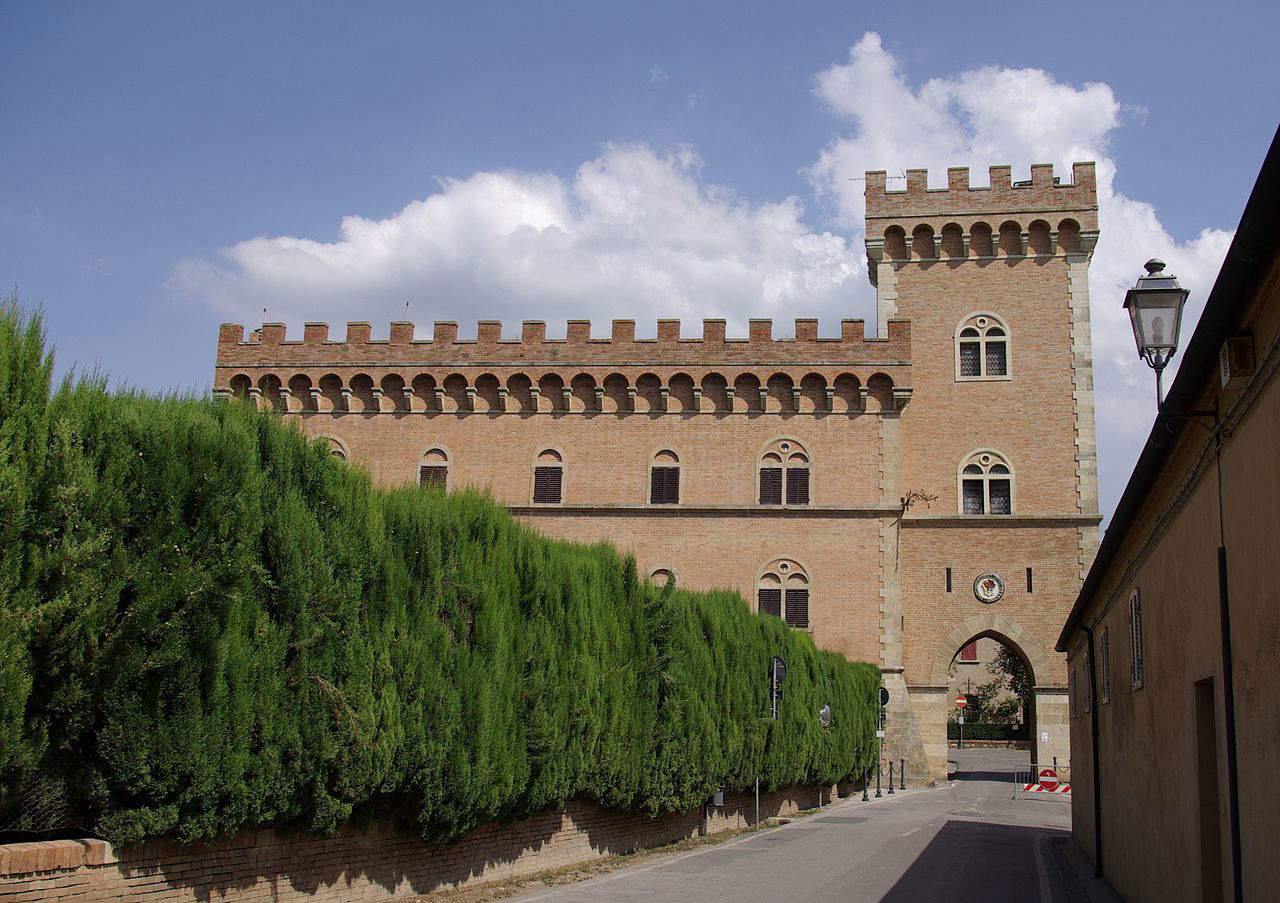 |
| The Castle of Bolgheri |
9. San Miniato
The historic village stands on top of a hill overlooking the surrounding valley, and originated in the 8th century, founded by Lombards (which is why in ancient times the village was also known as San Miniato al Tedesco). In the 14th century it was subjugated by Florence. San Miniato is known everywhere for its gastronomy (truffles in particular), but there are many unique monuments to be visited in this town, starting with the Cathedral of Santa Maria Assunta and San Genesio, which is located in the highest part of the village, overlooked only by the Rocca. The interior, redone in the 19th century, houses important works by 17th-century Tuscan artists. Near the church stand the ancient centers of religious and secular power, namely the Bishop’s Palace and the Palace of the Imperial Vicars, while not far away, further down the valley, the scenic 17th-century Bishop’s Seminary Palace stands with its long, ornate facade that closes off the square. Also worth seeing are the 14th-century Town Hall (which preserves several ancient frescoes) and the 18th-century Church of the Crucifix, which rises above a high flight of steps.
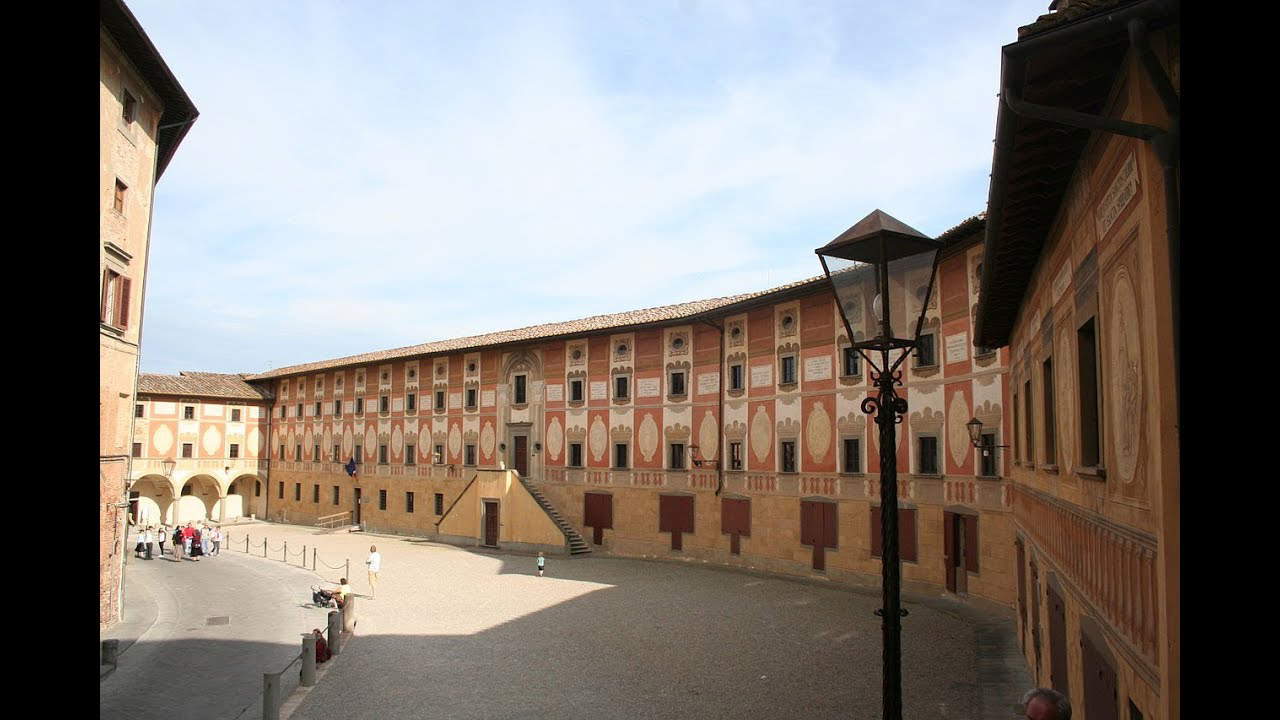 |
| San Miniato, the Palace of the Episcopal Seminary |
10. Castiglion Fiorentino
Known as “Castiglioni” in the local vernacular, Castiglion Fiorentino is one of the main towns of the Valdichiana and, although it draws its origins from a settlement of Etruscan times, it developed primarily as a Florentine stronghold, as its name suggests: the Florentines in fact conquered it in 1289 after defeating the Aretines at the Battle of Campaldino. Reconquered by the Aretines in 1303, it was disputed again throughout the 14th century until, in 1384, it became definitively Florentine and acquired its current name. The “castiglione” is what stood on the top of the hill, and today what remains is the Cassero Tower. The medieval palaces (the Palazzo Comunale and the Palazzo Pretorio: the latter houses the local Archaeological Museum), the Pinacoteca Comunale (Municipal Picture Gallery), which preserves valuable paintings by important Tuscan artists of all periods, the 13th-century church of San Francesco, where a St. Francis by Margaritone d’Arezzo can be admired, the collegiate church of San Giuliano which houses Renaissance panels and sculptures, and the celebrated Vasari Loggias (actually dating back to 1513 and only partially remodeled by the great Arezzo historiographer), which close off one side of the Town Hall square and offer a splendid view of the surrounding valley.
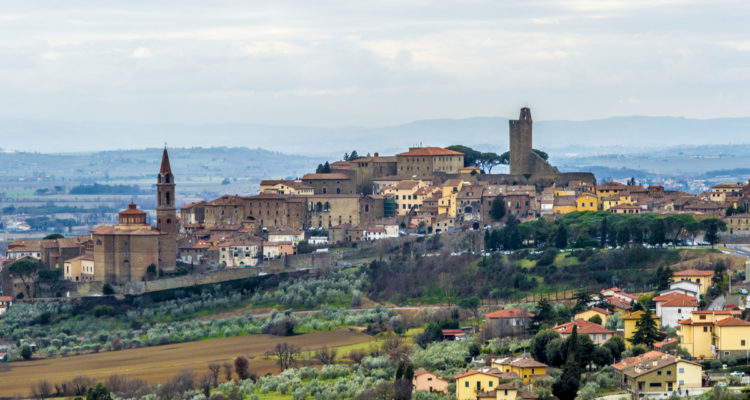 |
| View of Castiglion Fiorentino |
 |
| Ten villages to visit in Tuscany |
Warning: the translation into English of the original Italian article was created using automatic tools. We undertake to review all articles, but we do not guarantee the total absence of inaccuracies in the translation due to the program. You can find the original by clicking on the ITA button. If you find any mistake,please contact us.